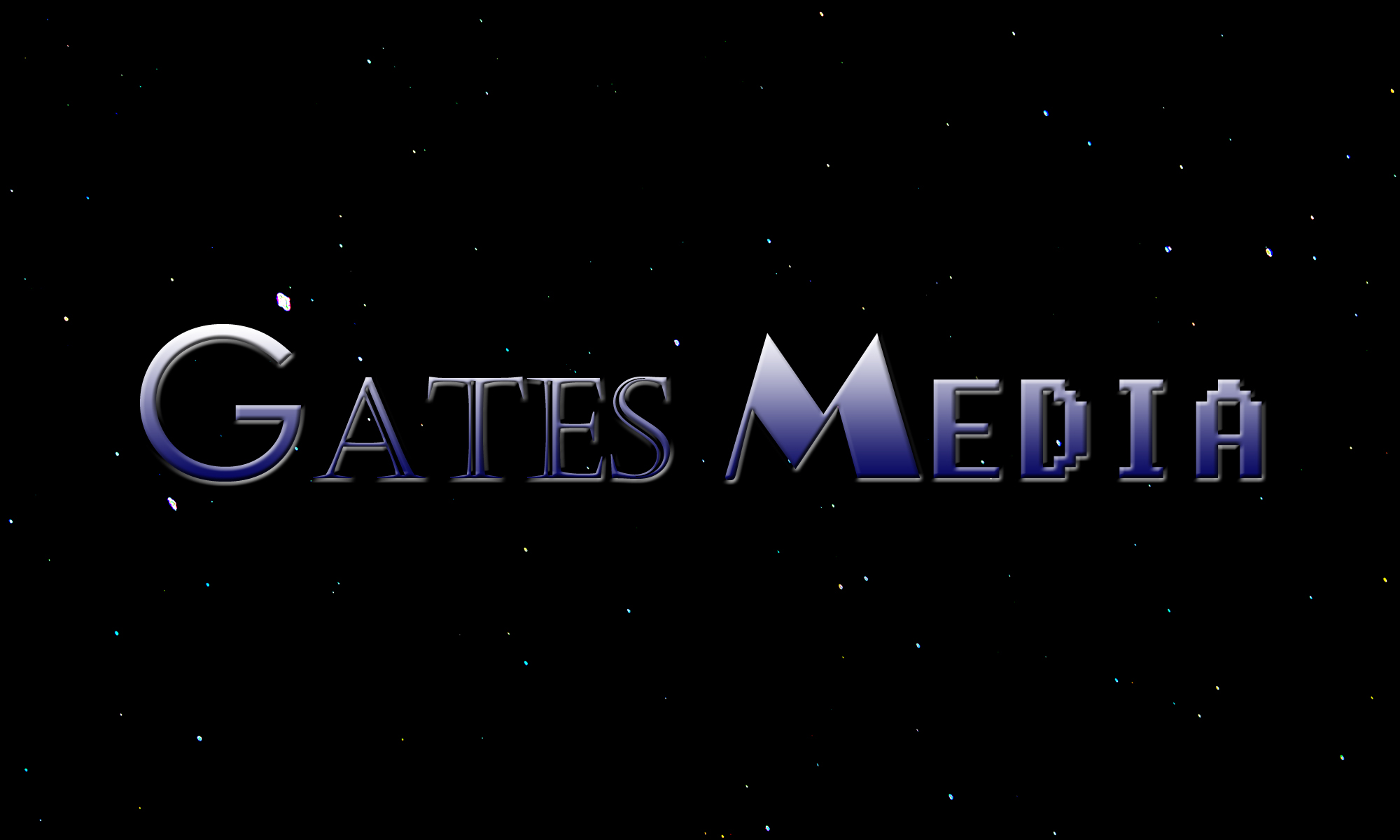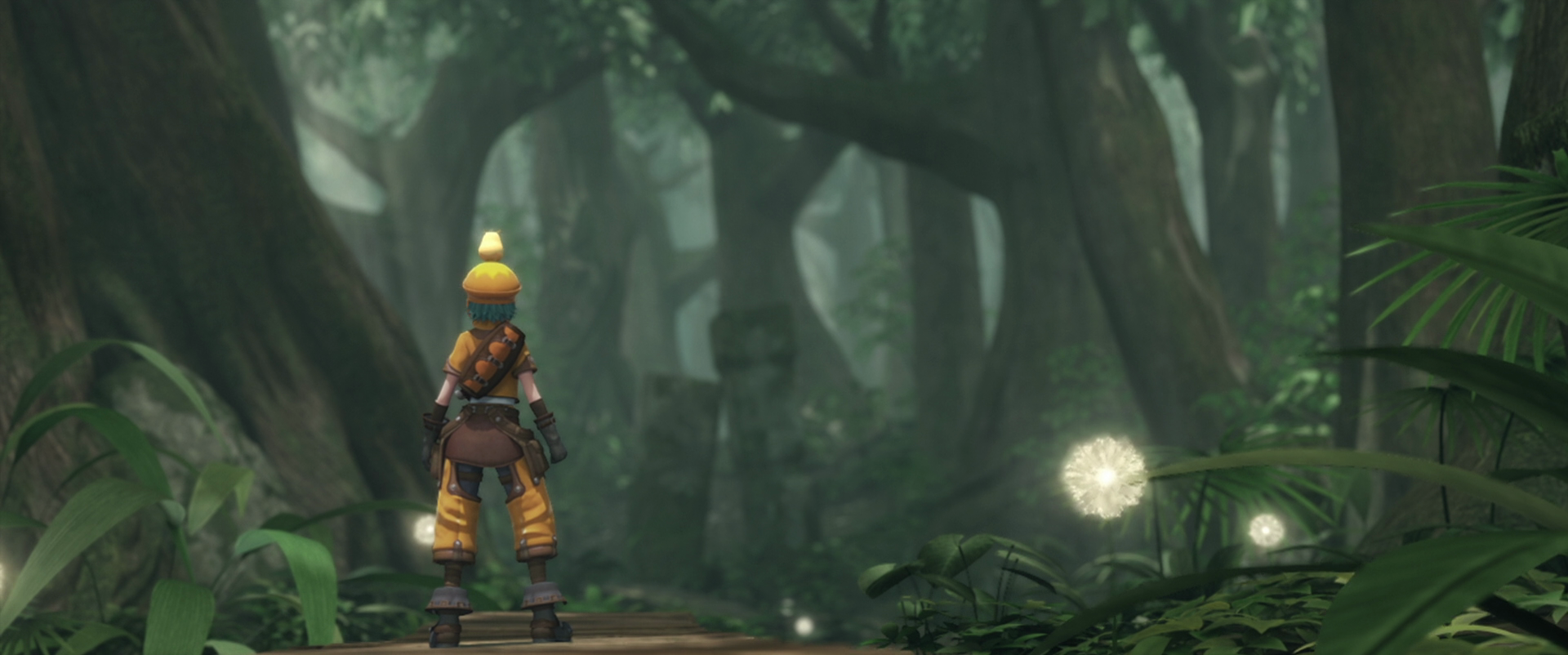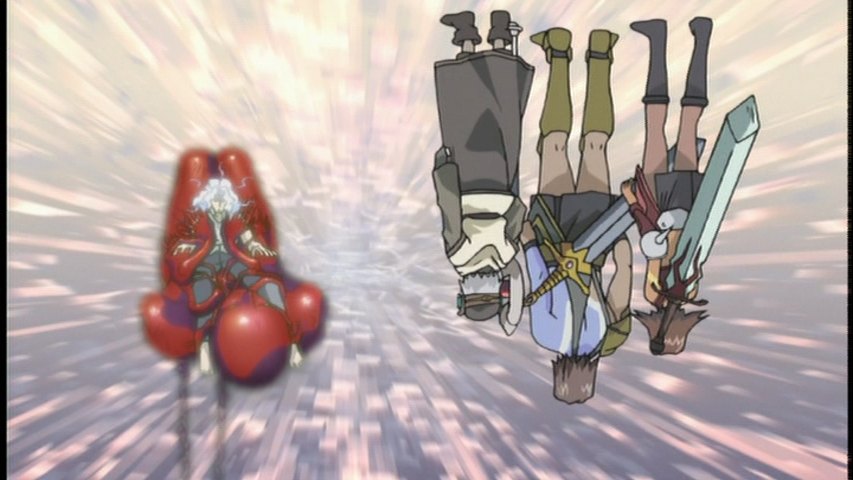Originally published on the Extra Life Community website
Edited by Jack Gardner
The .hack multimedia franchise began in 2002 and now spans video games, anime, movies, manga, and novels that all explore the fictitious online roleplaying game (ORPG) known as The World. .hack//Sign, the animated series that began the franchise, centers on Tsukasa, a player who, after waking up in a dungeon, finds himself trapped inside the ORPG with no terminal in front of him to log off of. On his journey to find out what happened to him and why, he must also come to terms with the cruel reality waiting for him in the real world. One of the latest entries into the series, the computer-animated movie .hack//Beyond the World, tells the story of Sora, a technology-averse teenager who is persuaded to play The World. Initially hoping to become more connected to her technology-obsessed friends and love interest, she instead finds herself entrusted with saving not only the game but also the entire world. Like the anime series that preceded it, .hack//Beyond the World makes a visual distinction between the game, where part of the movie takes place, and the real world the characters live in. The artistic choices in both works complement their stories’ commentary on gaming, Internet addiction, and social connection or disconnection in the age of technology. .hack//Beyond the World, however, isn’t as successful in creating a believable and relatable story because it doesn’t also use its art style to elaborate upon its characters as .hack//Sign does.
.hack//Sign takes place almost exclusively inside The World with brief fragments of the real world appearing in some episodes. These settings have different moods that are heavily laden with the emotions of the characters who inhabit them. To Tsukasa and his friends, The World is an escape from reality for various reasons. What each of them faces is only hinted at throughout the series, but the dreariness depicted in the scenes showing the real world conveys their feelings well enough. Reality is shown through grainy and desaturated footage. Character’s faces aren’t usually shown, and if they are, their eyes are hidden in deep shadows. No sounds can be heard other than music or static, and if there is dialog, the words are only displayed against a black background. It’s as if we’re viewing the scenes from the perspective of people so internally focused on their own pain that the world around them has lost detail. Only in the last episode does the real world gain sound and color as Tsukasa and his friends have each fulfilled some desire that makes reality a much more bearable place.
The game, while it appears happier for the characters than reality, is just creepy enough to serve as a reminder that beneath the surface there is something wrong. Scenes taking place here are colorful and have sound, dialog, and characters… as expected. Occasionally, however, shots are sideways, upside down, tilted, held at a distance for an abnormally long time, or focused on a random object in the scene reminiscent of the unusual shot choices in scenes taking place in the real world. The color palette is usually dark and the score is haunting. Frequently, these elements create a dark and mysterious atmosphere. The happier mood is tainted by some unseen or unaddressed problem.
About half of .hack//Beyond the World takes place in the real world while the rest takes place inside the ORPG. With its pastel coloring and use of 2D elements, the real world is shown as dull, flat, and ordinary, but it isn’t a bad place. Scenes can be well described as moving paintings. The 3D character models appear to have painted textures and light cell-shading. In many cases, all or part of the environments are 2D painted textures that are composited with the 3D elements in the scene. The coloring of everything is soft and muted. In contrast, scenes that take place inside The World have semi-photorealistic 3D graphics, depicting an adventurous and awe-inspiring environment. The cell-shading is gone, the colors are saturated, and most scenes are composed entirely of 3D models. Camera movements are also more dynamic and exciting, including point-of-view shots and spins.
Unlike those in .hack//Sign though, the two worlds have a similar tone to one another. When one is in chaos so is the other. While initially The World is amazing to Sora, it soon becomes the new ordinary. This, however, is consistent with a theme that runs throughout the movie: the real world and the digital world have differences but are overall the same. When Sora is finally convinced to try The World, she isn’t particularly happier there or more connected to the people around her. She is as clueless about ORPGs as she was in reality and as content to train by herself as she is to train with her friends. While it appears that her parents have separated and she feels somewhat disconnected from her classmates, her life isn’t particularly depressing. Her experiences in the game are as confusing and frustrating as they are extraordinary, which doesn’t make it much of an improvement. By the end of the movie, her feelings towards both worlds are still neutral.
Let’s face it. .hack//Beyond the World and .hack//Sign are about people in the near future playing World of Warcraft with VR headsets. The success of their stories depends on convincing the audience to care about fetch quests, boss fights, leveling up, and the possibility that the characters might die in a game where they have an infinite number of lives. .hack//Sign accomplishes this by giving the game believable real-world consequences. Player killing is equated to bullying. Failing a time-sensitive fetch quest is devastating to someone who didn’t have any self-confidence to begin with. Breaking up a faction also breaks up a friendship. As has already been discussed, even how the setting looks and sounds mirrors the thoughts and feelings of the characters. While these events don’t have widespread repercussions, they show that the game has a real effect on the characters and make the game’s more farfetched elements easier to believe. For example, an anomaly within the ORPG can cause players to fall into an unconscious or comatose state in the real world. By the end of the series, we still don’t know much about the players behind the controls, but through the emotions we’ve experienced with them, we want them to find happiness in the real world… even if they have to defeat an AI powered by negative emotions to do so.
.hack//Beyond the World gives the game much more devastating and widespread real-world consequences, but because it never takes the time to show how the game affects the protagonist, who we spend most of the movie with, it stretches the suspension of disbelief and fails to convince us that we should care. A computer virus has infected networks and servers around the world, including The World’s game servers. With electricity and networks down worldwide, reality is in chaos. In the game, the virus appears as a black cloud that destroys 3D assets and infects the brain signals of the players, causing them to fall into a comatose state. To save both worlds, Sora must find Aura, an artificial super-intelligence within the game, and give her information she needs to destroy the virus. The audience, however, has no reason to believe that Sora would do this. The World hasn’t had a significant effect on her personally. Even after playing it for a while, Sora still doesn’t seem to care that much about anyone or about technology. She continues holding her friend Tanaka, who she has a mild crush on, at a distance, and stops playing The World after a minor argument. When Tanaka becomes a comatose victim of the virus, Sora resolves to save him in an uncharacteristically impassioned outburst, but when everything is over, nothing about Sora changes. In the final minutes of the movie, she tells her friends of her indifference towards continuing to play The World. The final image is apparently of her enthusiastically breaking Tanaka’s cellphone to get his attention. Despite everything she went through, she is as disconnected and indifferent as ever, leaving us wondering why she even bothered.
In a story about a fantastic, futuristic ORPG, providing the audience with a way to relate to the characters is crucial to the story’s believability. The art style in .hack//Sign is only one of many ways that it explains the characters and their relationship to the worlds they live in. The ORPG serves as an escape from reality and a place to work through personal feelings. In .hack//Beyond the World, the differences between worlds appear to be superficial, which mirrors the movie’s theme that the virtual and real worlds are only different ways to communicate with people; one isn’t better than the other. The movie, however, fails to provide an alternative to the art style to explain its characters. As a passionless and randomly impulsive individual with unclear goals, Sora is difficult to understand. In turn, it’s difficult to care about or believe the final scenario where she must save an ORPG to save the entire Internet. By using its art style to the fullest, .hack//Sign is able to take the audience on the emotional journey of a handful of anonymous people in an alien environment. .hack//Beyond the World tells a grander tale, but its believability suffers from inferior visual storytelling.





